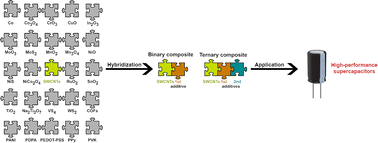Emergent pseudocapacitive behavior of single-walled carbon nanotube hybrids: a materials perspective
Abstract
Supercapacitor technology encompasses a wide field of research that has already marked its foot in commercialization, just after some initial years of concept development. A couple of past decades have witnessed enormous growth in gaining insights into the pseudocapacitive phenomenon and developing novel structures exhibiting this property. Carbon nanostructures, especially single-walled carbon nanotubes (SWCNTs), are considered potentially revolutionary materials, showing double-layer capacitance, which can be exploited for energy storage applications. This review article aims to examine the fundamental phenomenon by which SWCNTs could be utilized as pseudocapacitive electrodes by incorporating various conducting materials in their matrix. This study aims to provide a detailed overview of the latest technological advances in materials science, design, fabrication, and achievements of SWCNT hybrids as primary electrodes in charge storage devices. The discussion encompasses binary composites, including SWCNT/metal and SWCNT/polymer composites, as well as ternary hybrids, giving an overall comprehensive understanding of the latest advancements in this field along with the pressing challenges.

- This article is part of the themed collections: FOCUS: Recent Advance in Supercapacitors and 2022 Materials Chemistry Frontiers Review-type Articles


 Please wait while we load your content...
Please wait while we load your content...